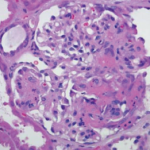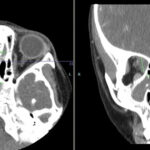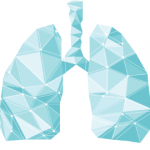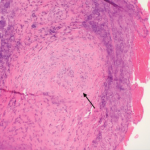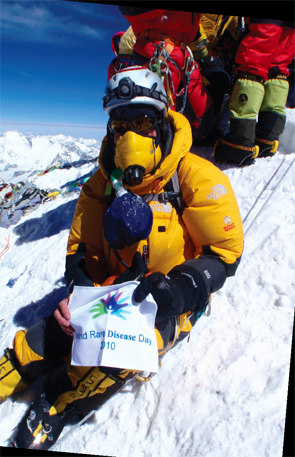
On the summit of Mt.
Everest, Ms. Abbott displays a banner for the National Organization of Rare Disorders.
On May 23, 2010, Cindy Abbott was standing on top of the world. She had spent the past 51 days climbing Mount Everest, the tallest mountain in the world, and had finally reached the summit.
“I was very anxious to get off and get back down,” she says, adding that the summit is about the size of a pool table. “Most of the accidents happen on the way down. So I sat down, took my medication, got my shot holding the National Organization of Rare Disorders (NORD) banner, put my glove back on and headed right down. The storm hit when we started down.”
At this high altitude, known as the Death Zone, the oxygen level is so low that the body begins to shut down. Even the most acclimatized mountain climbers can’t spend more than 48 hours above 26,000 feet. (The bottom of the Earth’s stratosphere is 33,000 feet.)
Under conditions with 40-mile-per-hour winds and sub-zero temperatures, both of Ms. Abbott’s corneas froze. For all practical purposes, she was blind, although she could distinguish between light and dark, which enabled her to differentiate rock from sky or snow. Her fingertips and cheeks were frostbitten.
Ms. Abbott and the other four climbers in her group used one rope to rappel down 3,000 feet to prevent them from plunging off the mountain’s edge.
“The storm lasted until we got down to Camp 4 and lasted through the night,” Ms. Abbott says, adding it took nearly seven hours to reach the camp. “I was the 40th American female to summit Mt. Everest. I was 51 years old.”
GPA Won’t Define Her

Dr. Dellaripa
Although impressive by any measure, that’s not Ms. Abbott’s biggest accomplishment. Hardly. Ms. Abbott suffers from granulomatosis with polyangiitis (GPA), a rare blood vessel disease that affects roughly three out of every 100,000 people, according to the American College of Rheumatology.1 GPA often attacks the sinuses, lungs and kidneys, and can lead to kidney failure.
Since her 2007 diagnosis, Ms. Abbott continues to defy the odds—and not just clinically. Although her condition has been stable for seven years, it has left her functionally blind in her left eye, caused a series of transient ischemic attacks and prompted multiple sinus and eye surgeries. However, she refuses to let the illness define her or limit her active lifestyle. She continues climbing mountains, and earlier this year, finished Alaska’s 1,000 mile Iditarod race. What motivates her? No one knows, not even Ms. Abbot, who claims she’s simply experiencing life.
Toughest Challenge of All
Although some research has been conducted on GPA, the cause is still unknown.
